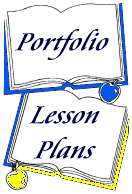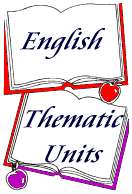![]()
|

Conjunctions
A conjunction joins grammatical structures.
|
Coordinating
Conjunctions
Coordinating conjunctions join grammatical structures of similar form,
transforming them into a single grammatical unit.
Correlative
Conjunctions
Correlative
conjunctions are coordinating conjunctions paired with other words that extend
the meaning of the first.
Conjunctive
Adverbs
Conjunctive adverbs
they connect and signal relationships between two sentences, and they are like
adverbs in the kinds of meaning they express.
Subordinating
Conjunctions
Subordinating
conjunctions create complex sentences by joining grammatically unequal elements:
a subordinate (or dependent) clause to a main (independent) clause.
| Coordinating Conjunctions | and, but, or, nor, yet, for, so | Punctuate
with a comma:
Either the teacher
is late, or we are early. |
|
| Correlative Conjunctions | both...and, either...or, neither...nor, not only...but also | ||
| Conjunctive Adverbs | |||
| Contrast, opposition | however, instead, nevertheless, on the contrary, on the other hand, still, anyway | Punctuate
with a semicolon or period. Set off the conjunctive adverb with a comma,
or with a pair of commas if it is inside its clause:
Ted spoke; however,
no one listed. |
|
| Addition | also, besides, furthermore, in addition, in fact, moreover | ||
| Cause and effect, conclusion | accordingly, as a result, consequently, hence, so, therefore, this | ||
| Example, restatement | for example, for instance, namely, that is | ||
| Time | afterward9s), earlier, finally, in the meantime, later, meanwhile, then, subsequently | ||
| Choice | otherwise | ||
| Emphasis | indeed, that is to say, to be sure | ||
| Subordinating Conjunctions | |||
| Time | after, as, as soon as, before, once, since, until, when, while | Punctuate
with a comma if subordinate clause comes first:
After the sun set,
the mosquitoes became active. |
|
| Manner | as, as if, as though, like | ||
| Contrast, opposition | although, though, whereas, while, except (that) | ||
| Cause and effect | because, in that, now that, since, so that | ||
| Condition | if, in case, provided (that), unless | ||
| Purpose | so that, in order that | ||
| Comparison | as...as, more than, less than, than | ||
| Rules: | Subordinating
conjunctions: Punctuate with a comma if subordinate clause comes
first: After the sun set, the mosquitoes became active. The mosquitoes became active after the sun set. Coordinating and
correlative conjunctions: Punctuate
with a comma: Conjunctive
Adverbs: Punctuate
with a semicolon or period. Set off the conjunctive adverb with a comma,
or with a pair of commas if it is inside its clause: |
| Tests: | If it has a noun phrase after it, it is a preposition and not a subordinating conjunction. |





